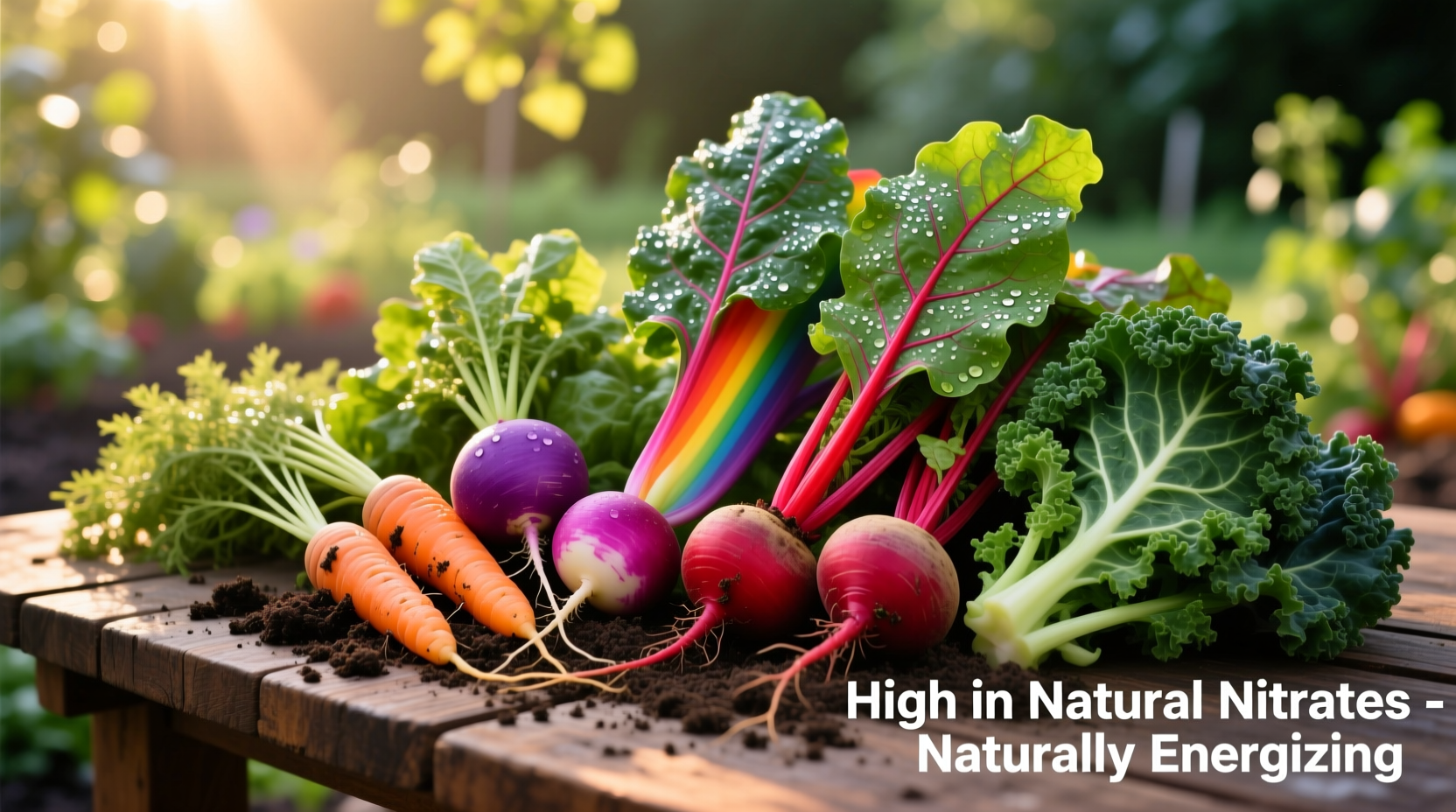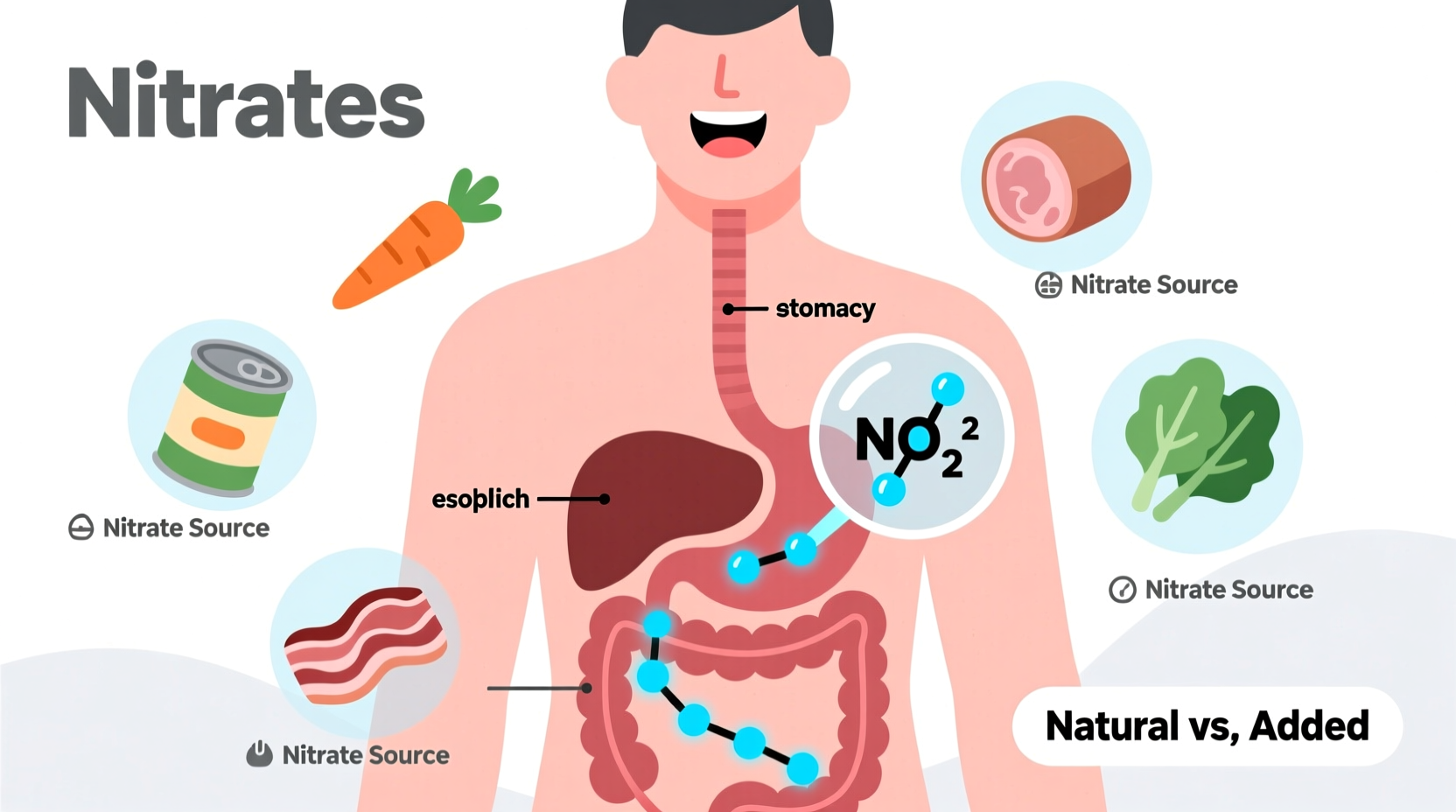Demystifying Nitrates: What They Are and Why They Matter
When you search what are nitrates in food, you're likely seeking clarity about these often-misunderstood compounds. Nitrates (NO₃⁻) are chemical compounds containing nitrogen and oxygen that occur naturally in soil, water, and many foods. They're not inherently harmful—in fact, they play essential roles in both food preservation and human physiology.
The Science Behind Food Nitrates
Nitrates form when nitrogen from the atmosphere combines with oxygen. Plants absorb nitrates from soil through their roots, converting them into amino acids and proteins. This natural process makes vegetables the primary source of dietary nitrates for most people. When consumed, about 25% of dietary nitrates convert to nitrites (NO₂⁻) in our saliva, which then transform into nitric oxide—a molecule vital for cardiovascular health.

Natural vs. Added Nitrates: Understanding the Critical Difference
Not all nitrates in food are created equal. The source and context dramatically impact their effects on health:
| Natural Dietary Nitrates | Added Nitrites/Nitrates |
|---|---|
| Found in vegetables (beets, spinach, arugula) | Added to processed meats (bacon, ham, salami) |
| Accompanied by antioxidants and vitamins | Often combined with amines that form nitrosamines |
| Associated with cardiovascular benefits | Linked to potential health risks when consumed in excess |
| No established upper safety limit | Regulated by FDA (max 200 ppm in meats) |
Why Food Manufacturers Add Nitrates
The U.S. Food and Drug Administration permits limited nitrate and nitrite use in processed meats primarily for three critical purposes:
- Preventing botulism - Deadly bacteria that thrive in oxygen-free environments like cured meats
- Preserving color - Maintaining the appealing pink hue of cured meats
- Developing characteristic flavors - Creating the distinctive taste of bacon and ham
Without these additives, products like deli meats would pose significant food safety risks and spoil much faster.
Health Implications: Benefits vs. Concerns
The relationship between nitrates in food and human health follows a clear pattern of dose-dependent effects:
Cardiovascular Benefits of Vegetable Nitrates
Research from the National Institutes of Health shows dietary nitrates from vegetables improve blood flow by converting to nitric oxide, which:
- Lowers blood pressure by relaxing blood vessels
- Enhances exercise performance and oxygen delivery
- May reduce risk of heart disease
Processed Meat Concerns
When nitrates combine with amines in meat during high-heat cooking, they can form N-nitroso compounds, some of which are potentially carcinogenic. The World Health Organization classifies processed meats as Group 1 carcinogens, partly due to these compounds.
Common Food Sources of Nitrates
Understanding where nitrates appear in your diet helps make informed choices:
Nitrate-Rich Vegetables (Natural Sources)
- Beets and beetroot juice (highest concentration)
- Spinach and other leafy greens
- Arugula and radishes
- Celery and celeriac
- Swiss chard and lettuce
Processed Foods with Added Nitrates
- Bacon and ham
- Hot dogs and sausages
- Corned beef and pastrami
- Some smoked fish products
- Certain canned meats
Practical Guidance for Health-Conscious Consumers
You don't need to eliminate nitrates from your diet—instead, focus on smart consumption strategies:
Maximize Benefits, Minimize Risks
- Eat nitrate-rich vegetables daily - Their natural nitrates support cardiovascular health
- Choose "no nitrate added" processed meats - These use celery juice as a natural alternative
- Limited processed meat consumption - The American Heart Association recommends moderation
- Cook processed meats at lower temperatures - Reduces formation of harmful compounds
- Pair processed meats with vitamin C-rich foods - Citrus fruits inhibit nitrosamine formation
Regulatory Timeline: Nitrate Safety Standards
Nitrate regulation in food has evolved significantly over the past century:
- 1920s: First scientific recognition of nitrates' role in preventing botulism in cured meats
- 1960s: Research identifies potential link between nitrosamines and cancer
- 1970s: FDA limits nitrate levels in meats and requires ascorbate (vitamin C) addition
- 2000s: Growing recognition of benefits from vegetable-derived dietary nitrates
- 2020s: Ongoing research into optimal dietary patterns balancing benefits and risks
Context Matters: When Nitrates Are Beneficial vs. Concerning
The impact of nitrates in food depends entirely on context:
- Beneficial context: Nitrates consumed with vegetables containing antioxidants (vitamin C, polyphenols) that prevent harmful compound formation
- Neutral context: Small amounts of nitrates in processed meats when consumed occasionally with vitamin C-rich foods
- Concerning context: Regular high consumption of processed meats without protective dietary components
Individual factors like overall diet quality, health status, and genetic variations in nitrate metabolism also influence how your body processes these compounds.
Making Informed Choices About Nitrates in Food
Understanding what are nitrates in food empowers you to make choices aligned with your health goals. Focus on incorporating nitrate-rich vegetables while being mindful of processed meat consumption. The key isn't eliminating nitrates entirely but understanding their different forms and contexts in your diet.











 浙公网安备
33010002000092号
浙公网安备
33010002000092号 浙B2-20120091-4
浙B2-20120091-4